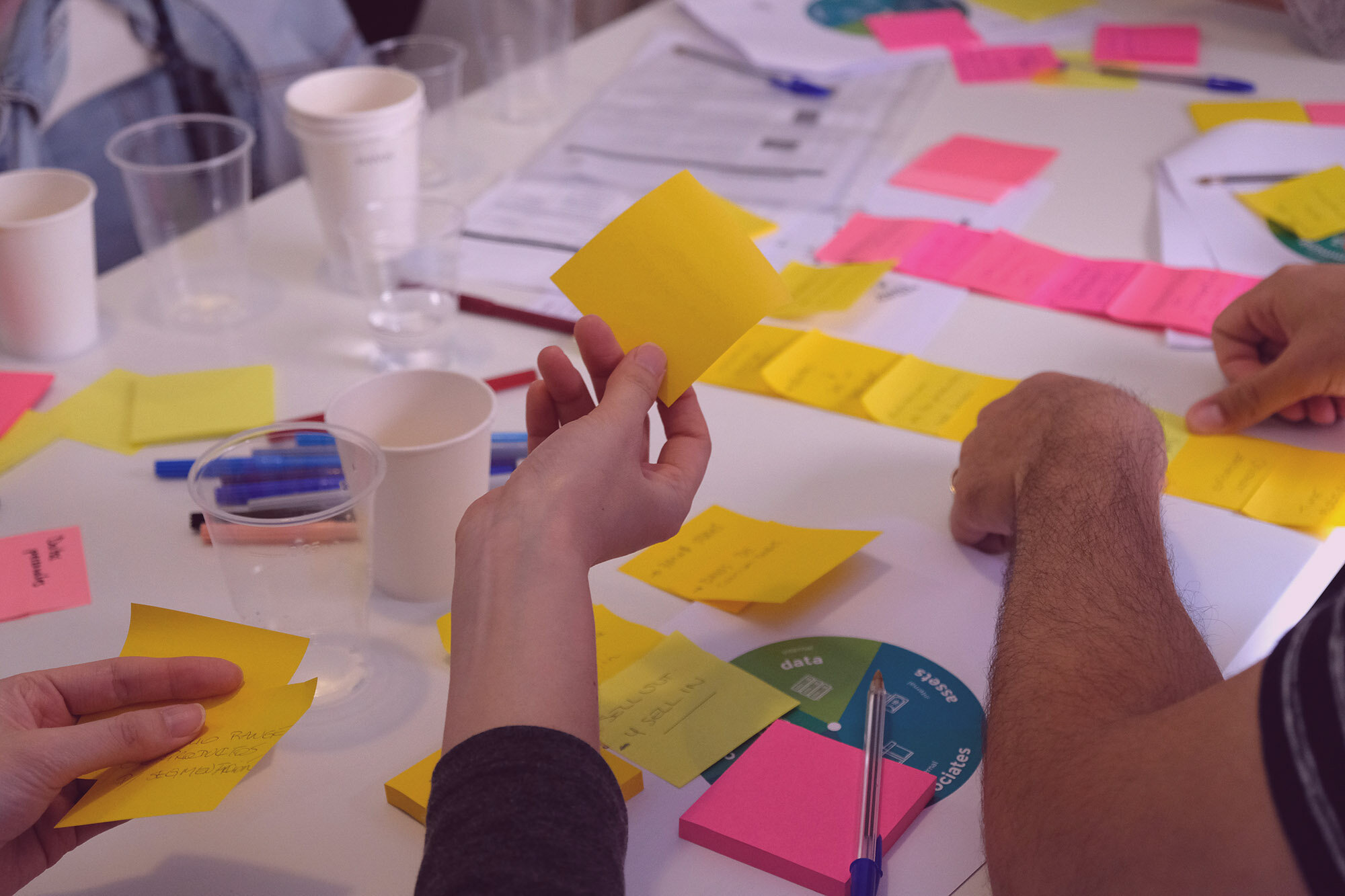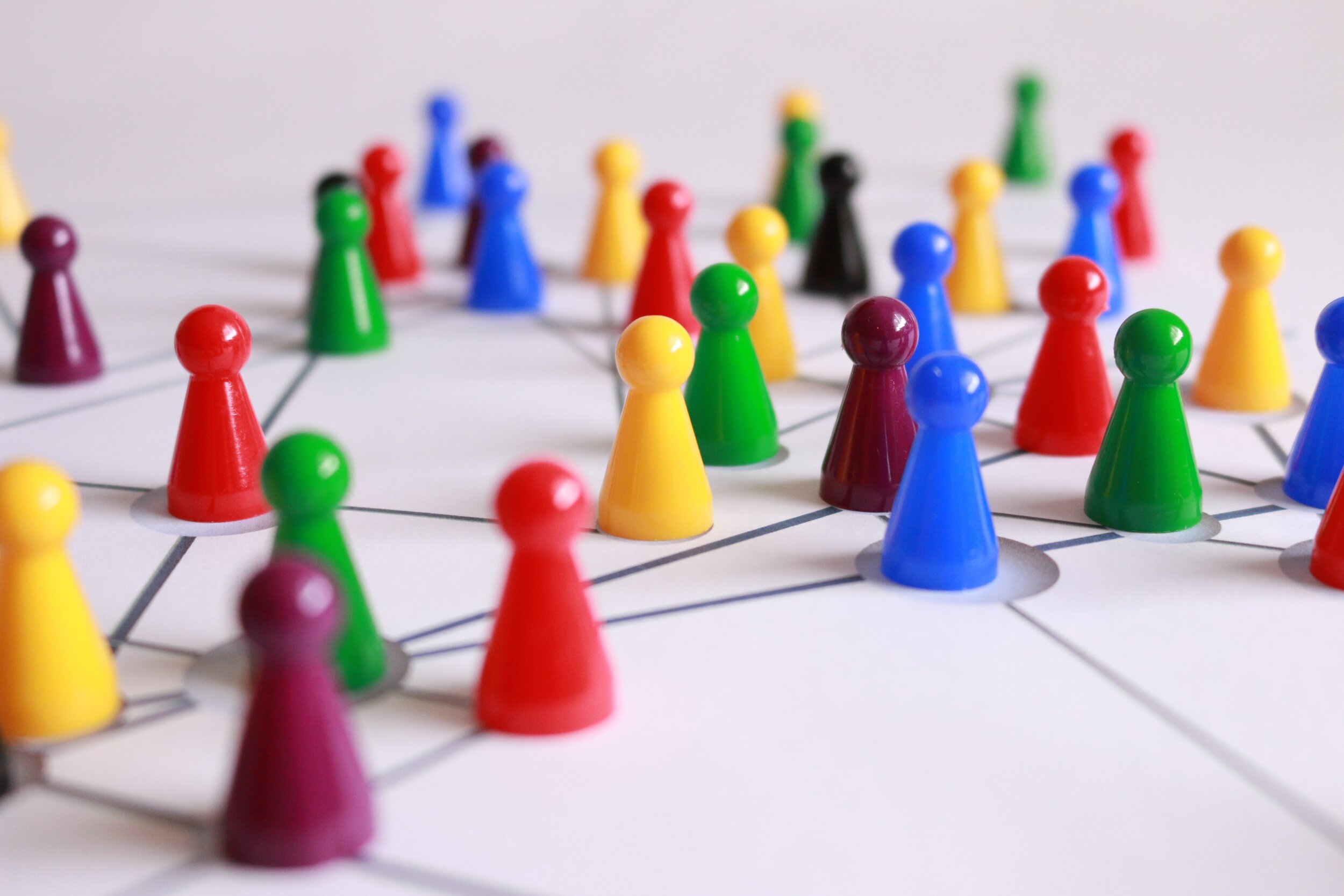Disruptive businesses
Disruptive businesses
Next-generation purposes require next-generation systems.
Next-generation purposes require next-generation systems.
17 de febrero de 2021


By Javi Creus, founder and director. (Original publication in Spanish)
The Edelman Trust Barometer 2020 (Edelman Trust Barometer 2020) states that 56% of the global population has lost trust in companies, institutions, media, and NGOs. None of these agents are perceived as ethical and competent at the same time, and the sentiment that they do not align with the needs and desires of the population has been widespread since before the pandemic. In this scenario, only collaboration between agents seems capable of complementing capabilities and restoring trust. Thus, public-private collaborations or company-NGOs are multiplying every day.
And the lessons from the pandemic also point towards teamwork. A year after the onset of the health crisis, the basic systems for life have proven not to be ready to offer universal and equitable coverage. This includes health, housing, the economy, food, energy, internet access, mobility, education, and work. The emergency has highlighted the existing social and economic gaps in these areas and has brought the digital and generational divides to the fore even more forcefully. The planet is also telling us that, in this way, there is no future.
However, over the past year, our society has demonstrated an unprecedented social plasticity, a capacity for change, and a speed of reorganization. Scientific cooperation for vaccine development, collaboration between industries and makers for producing medical equipment, and community organization for aiding the elderly are just some of the many actions that show the need to work as a team to genuinely impact the entire system.
Better systems, better results
All these cases exemplify a principle that Professor Stafford Beer (1926-2002) announced in 1972: “the purpose of a system is what it does”. The radical nature of this statement forces us to examine exclusively the facts or results of a system, disregarding intentions, expectations, biases, or knowledge of the circumstances in which agents operate.
In the three examples, the purpose has shaped the system: it has incentivized the relationship between incumbent and emerging agents, broken down borders between industries, accelerated the adoption of available technologies, and invented new uses.
The message is clear: if we want better results, we need better systems. As people and things connect, at least two relevant effects occur: interdependencies and feedback cycles become more apparent, and data production multiplies, creating new spaces for analysis.
Achieving radical purposes for systems, the new match point
If the system is the unit of transformation, we need solutions that stimulate its transformation. At Ideas for Change, we have accumulated knowledge, methodologies, and experiences that allow us to get a system to work towards achieving radical and shared purposes, which we call #FuturosQueMolan. There are many hypotheses we have initiated in recent months in this area: how can we make the transportation time of goods in El Salvador more predictable and shorter? How can we design a 24/7 home care system that is affordable for the population and creates decent jobs? What new business models arise from the potential of immobility or excess energy thanks to renewables? What new businesses can accelerate the energy transition through customer savings? How can more knowledge and new proposals for action be generated driven by the capacities of citizens and new low-cost biological sensors? All of these are challenges for a new generation system. Challenges that define a new system, that gather and combine all those who can potentially contribute to designing and developing new combinations of capabilities that, multiplied by foreseeable technological and social innovation, generate new standards of service delivery. A new level of results: doing more, with less and better.

Disruptive processes that expand the realm of possibilities and reveal internal abundance
A system evolves in the direction in which it investigates. Therefore, in our processes, it is the participants, organized into teams, who first explore the consequences of the initial challenge and anticipate what new technologies, capacities, or new forms of cooperation will arise in this new scenario. For us, expanding the realm of possibilities is the first step to committing to what is desirable, and fortunately, circumstances are favorable. We live not only in a period of maximum pressure for change and collaboration but also in a cycle of mutually accelerated technological and social innovation.
The value of an asset or capacity depends on the purpose. A hammer is of little use for painting walls. Therefore, the second phase of our methodology invites participants to re-evaluate what their organizations already possess: data, tangible assets, human capacities, tools and knowledge, according to their contribution to the stated purpose. When you change the point of view, the way you see things changes. Each participant identifies those elements "with future" in their organization, and the teams combine them: we bring forth the internal abundance of the system.
The exponential impact is achieved when existing capacities leverage the development vectors of the environment. With each new technological wave, a new realm of possibilities opens up. If in the past we rented apartments by the week using a landline and now we rent apartments by the day using a mobile phone, in the future we will rent rooms by the hour with a smart lock. It involves designing models for generating and capturing value that anticipate and grow with the deployment of a new standard of connectivity or costs, with new units of value and assets available, driven by new citizen capacities, other emerging systems, or communities.
At the end of our ideation processes, participants develop levels of mutual knowledge and trust that predispose them to put their ideas into action.
This reminds us of the father of cosmonautics, Konstantin Tsiolkovsky (1857 - 1935), who not only calculated the rocket equation but also the mental force of people thinking together on the same idea. According to this physicist, philosopher, and writer, “two like-minded thinkers multiply the power of their minds by seven, and three thinkers, by forty-nine.”
By Javi Creus, founder and director. (Original publication in Spanish)
The Edelman Trust Barometer 2020 (Edelman Trust Barometer 2020) states that 56% of the global population has lost trust in companies, institutions, media, and NGOs. None of these agents are perceived as ethical and competent at the same time, and the sentiment that they do not align with the needs and desires of the population has been widespread since before the pandemic. In this scenario, only collaboration between agents seems capable of complementing capabilities and restoring trust. Thus, public-private collaborations or company-NGOs are multiplying every day.
And the lessons from the pandemic also point towards teamwork. A year after the onset of the health crisis, the basic systems for life have proven not to be ready to offer universal and equitable coverage. This includes health, housing, the economy, food, energy, internet access, mobility, education, and work. The emergency has highlighted the existing social and economic gaps in these areas and has brought the digital and generational divides to the fore even more forcefully. The planet is also telling us that, in this way, there is no future.
However, over the past year, our society has demonstrated an unprecedented social plasticity, a capacity for change, and a speed of reorganization. Scientific cooperation for vaccine development, collaboration between industries and makers for producing medical equipment, and community organization for aiding the elderly are just some of the many actions that show the need to work as a team to genuinely impact the entire system.
Better systems, better results
All these cases exemplify a principle that Professor Stafford Beer (1926-2002) announced in 1972: “the purpose of a system is what it does”. The radical nature of this statement forces us to examine exclusively the facts or results of a system, disregarding intentions, expectations, biases, or knowledge of the circumstances in which agents operate.
In the three examples, the purpose has shaped the system: it has incentivized the relationship between incumbent and emerging agents, broken down borders between industries, accelerated the adoption of available technologies, and invented new uses.
The message is clear: if we want better results, we need better systems. As people and things connect, at least two relevant effects occur: interdependencies and feedback cycles become more apparent, and data production multiplies, creating new spaces for analysis.
Achieving radical purposes for systems, the new match point
If the system is the unit of transformation, we need solutions that stimulate its transformation. At Ideas for Change, we have accumulated knowledge, methodologies, and experiences that allow us to get a system to work towards achieving radical and shared purposes, which we call #FuturosQueMolan. There are many hypotheses we have initiated in recent months in this area: how can we make the transportation time of goods in El Salvador more predictable and shorter? How can we design a 24/7 home care system that is affordable for the population and creates decent jobs? What new business models arise from the potential of immobility or excess energy thanks to renewables? What new businesses can accelerate the energy transition through customer savings? How can more knowledge and new proposals for action be generated driven by the capacities of citizens and new low-cost biological sensors? All of these are challenges for a new generation system. Challenges that define a new system, that gather and combine all those who can potentially contribute to designing and developing new combinations of capabilities that, multiplied by foreseeable technological and social innovation, generate new standards of service delivery. A new level of results: doing more, with less and better.

Disruptive processes that expand the realm of possibilities and reveal internal abundance
A system evolves in the direction in which it investigates. Therefore, in our processes, it is the participants, organized into teams, who first explore the consequences of the initial challenge and anticipate what new technologies, capacities, or new forms of cooperation will arise in this new scenario. For us, expanding the realm of possibilities is the first step to committing to what is desirable, and fortunately, circumstances are favorable. We live not only in a period of maximum pressure for change and collaboration but also in a cycle of mutually accelerated technological and social innovation.
The value of an asset or capacity depends on the purpose. A hammer is of little use for painting walls. Therefore, the second phase of our methodology invites participants to re-evaluate what their organizations already possess: data, tangible assets, human capacities, tools and knowledge, according to their contribution to the stated purpose. When you change the point of view, the way you see things changes. Each participant identifies those elements "with future" in their organization, and the teams combine them: we bring forth the internal abundance of the system.
The exponential impact is achieved when existing capacities leverage the development vectors of the environment. With each new technological wave, a new realm of possibilities opens up. If in the past we rented apartments by the week using a landline and now we rent apartments by the day using a mobile phone, in the future we will rent rooms by the hour with a smart lock. It involves designing models for generating and capturing value that anticipate and grow with the deployment of a new standard of connectivity or costs, with new units of value and assets available, driven by new citizen capacities, other emerging systems, or communities.
At the end of our ideation processes, participants develop levels of mutual knowledge and trust that predispose them to put their ideas into action.
This reminds us of the father of cosmonautics, Konstantin Tsiolkovsky (1857 - 1935), who not only calculated the rocket equation but also the mental force of people thinking together on the same idea. According to this physicist, philosopher, and writer, “two like-minded thinkers multiply the power of their minds by seven, and three thinkers, by forty-nine.”


